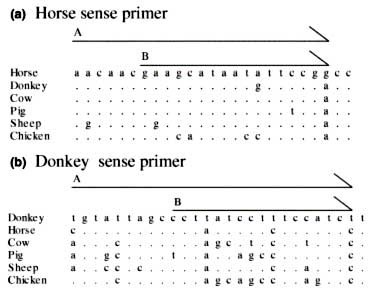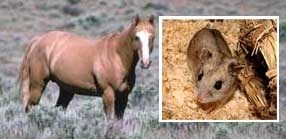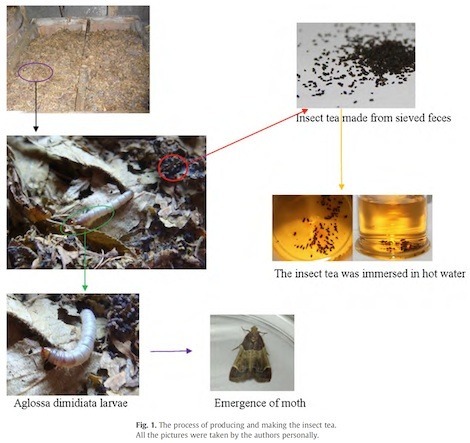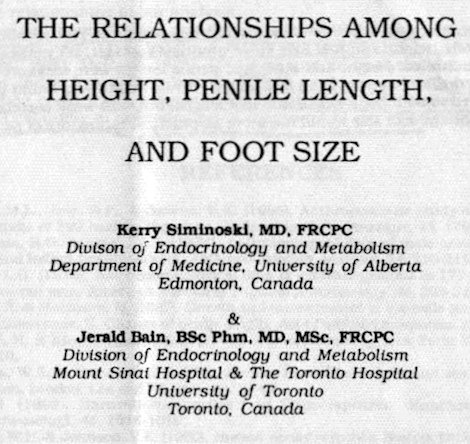Marc Abrahams's Blog, page 516
February 14, 2013
Does water or blowing air stimulate Canadian cows to defecate?
Cow defecation and two of the four traditional Greek elements that constitute the universe are the subjects of this inquiry:
“Does water or blowing air stimulate cows to defecate?” Marianne Villettaz Robichaud, Anne Marie de Passillé, Jeffrey Rushen, Applied Animal Behaviour Science, epub February 5, 2013. (Thanks to investigator Jim Handman for bringing this to our attention.) The authors, at Université Laval, Québec, and at Agriculture and Agri-Food Canada, Agassiz, British Columbia, Canada, explain:
“Manure is an important cause of dirtiness and disease for cows and can affect milk quality and human health. The aim of this study was to test whether we could stimulate cows to defecate at a particular location in order to reduce the spread of manure. A series of four tests with 12 lactating Holstein cows (days in milk=137.5±17.5 days, parity=3.3±1.5) was conducted. In Test 1, cows walked through either an empty footbath or one filled with water (21°C) following a balanced order with one treatment per day, for 6 days. Cows were more likely to defecate when walked through the water filled footbath (67% vs 42% of tests: P=0.04). In Test 2, the cows stood for 2min either in an empty footbath or in a footbath filled with still water or with running water, with one treatment per day, for 9 days. In Test 3, the cows stood for 2min in an empty footbath with nothing, air or water sprayed on their feet, with one treatment per day, for 9 days. No significant treatment differences were found for Tests 2 and 3 (P>0.10). After Test 3, we repeated one repetition of Test 1 (Test 4) but no treatment differences were found at that point (P>0.10). None of our tests reliably stimulated defecation, which seemed to occur most when cows were exposed to novelty.”
David Malakoff has a nice writeup about it in ScienceNow: “Can You Potty Train a Cow?“

Involuntary Hippophagia (4): Nothing new (the 1948 Horsemeat scandal)
Involuntary Hippophagia (the unintended ingestion of a horse, or part thereof ) is nothing new, it seems. Click on the image to be transported to a website that will show you video of the possibly shocking film ‘The Horsemeat Scandal 1948′:
“Don’t think the horse meat scandal is a new phenomenon. In fact it’s an old trick to pass off horsemeat as beef and other meats.”
- says British Pathé which presents an that possibly shocking film.

February 13, 2013
A permit for the Movement of Things
Should you be suddenly confronted with a demand to see a Permit for the Movement of Things, be aware that there are, in some places and at some times, good reasons for the existence of and the demand to see such permits.
The Canadian Department of Justice explains, in Regulation SOR/95-212, one such case. Details are on the department’s web site.
(HT New Scientist)

Involuntary Hippophagia (3): Horse and Donkey detection
Those concerned about Involuntary Hippophagia: (the unintended ingestion of a horse, or part thereof ) may take comfort in a report published in the journal Meat Science, Volume 70, Issue 4, 2005.
As far back as eight years ago, farsighted government researchers at (what was) the Central Science Laboratory, Yorkshire, UK, (now swallowed by the Department for Environment, Food and Rural Affairs), had already developed an exquisitely sensitive Horse and Donkey test using real-time PCR. The new assay methods, which were validated against samples of horse sausage, horse steak, horse burger and horse salami, (and corresponding donkey foodstuffs) were so accurate that they could detect just a few picograms of horse or donkey in a sample (1 pg is roughly the weight of a single E. coli bacterium).
“We have developed real-time PCR assays specific for horse and donkey, applicable to the detection of low levels of horse or donkey meat in commercial products. Primers, designed to the mitochondrial cytochrome b gene, were 3′ mismatched to closely related and other commercial species. Amplification of non-target species DNA was prevented by truncation of primers at the 5′ position, thereby conferring complete specificity. Both assays were highly sensitive and detected the presence of 1 pg of donkey template DNA or 25 pg of horse template DNA when assessed using dilutions of DNA in water. Model food samples, spiked with horse or donkey muscle and commercial products containing horse, were successfully tested for the presence of horse or donkey, demonstrating the applicability of the assays to food products.“

Chubby Checker, the “Chubby Checker”, and the Ig Nobel Prize
The TCPalm web site, in Florida, reports:
Chubby Checker’s federal lawsuit has sexual twist, Gary law firm in Stuart says
FORT PIERCE — Stuart attorney Willie Gary has filed a federal lawsuit with a “Twist.”
Gary and members of his law firm filed a lawsuit late Monday in federal court in Fort Pierce on behalf of Chubby Checker, the 71-year-old singer known for “The Twist,” against Hewlett-Packard and its subsidiary Palm Inc. over the use of Checker’s name on a software application that claims to estimate the size of a man’s penis based on his shoe size….
Should this proceed to a courtroom, expect one side or the other to discuss the 1998 Ig Nobel Prize in statistics, which was awarded to Jerald Bain of Mt. Sinai Hospital in Toronto and Kerry Siminoski of the University of Alberta for their carefully measured report, “The Relationships Among Height, Penile Length, and Foot Size.”
Below: video of Chubby Checker, the singer, singing his famous song. Note that he is wearing shoes:

February 12, 2013
Ig winner Topol, and the smartphone colonoscopy question
Ig Nobel Prize winner Eric Topol* is featured in a long report by NBC-TV News, about Dr. Topol’s work with smartphones. NBC’s summary says:
One of the world’s top physicians, Dr. Eric Topol, has a prescription that could improve your family’s health and make medical care cheaper. The cardiologist claims that the key is the smartphone. Topol has become the foremost expert in the exploding field of wireless medicine.
Thanks to investigators Bob Rose and Leslie Lawrence for bringing this to our attention, and asking: “Can you give yourself a colonoscopy with your smartphone?”
*Dr. Topol was lead author on a medical research paper which has one hundred times as many authors as pages. He and his approximately 975 co-authors shared the 1993 Ig Nobel Prize in medicine.

Robots and humans interact – part 2 of 3
Improbable continues its look at the RO-MAN Workshop 2012. – the 21st IEEE International Symposium on Robot and Human Interactive Communication, which was held September 9-13, Paris, France.
Part 2 : Change the music and dance
There are robots which attempt to dance, there are robots which attempt to speak, and there are robots which attempt to respond to voice commands. Far fewer, however, attempt all three at the same time. An exception is the ‘bot created by a joint Japanese / Portuguese university study-group (in association with Honda) led by João Lobato Oliveira of the Artificial Intelligence and Computer Science Laboratory (LIACC) – FEUP, Porto, Portugal.
One of the inherent problems with such a project is that since the robot is producing (pre-recorded) music and replies in a spoken voice, it might sometimes have problems in hearing the voice commands of a nearby human. Thus it was equipped with what the team call an Ego Noise Suppression (ENS) module.
“The experimental tests revealed accurate and robust beat tracking and speech recognition, and convincing dance beat-synchrony.”
- the relative successes of which can be appreciated in the video above. The team’s paper can be read in full here : An active audition framework for auditory-driven HRI: Application to interactive robot dancing
COMING SOON : RO-MAN’s lighter-than-air ‘bot

China edition of the Ig Nobel Prizes book
The China edition of my first Ig Nobel Prizes book (ISBN 978-7-308-10345-9) is now out. Here’s the cover. I don’t quite understand the imagery, but I think I like it:
The first edition was published in England, the second in the US, and a bunch of others followed. As did the second Ig Nobel book. And recently there appeared, as if by magic, the new book (in English only, so far): This Is Improbable:

Involuntary Hippophagia (2): Horsemeat and Hamsters
Improbable readers may be familiar with the Pork-Cat Syndrome (a link between allergic sensitivity to pork meat and cat epithelia), details of which were first published in 1994.
 Perhaps less well known though is the Horsemeat-Hamster Syndrome, which could have implications for those who have been exposed to the current UK outbreak of Involuntary Hippophagia. ['Unintended ingestion of a horse, or part thereof.'] A study explains:
Perhaps less well known though is the Horsemeat-Hamster Syndrome, which could have implications for those who have been exposed to the current UK outbreak of Involuntary Hippophagia. ['Unintended ingestion of a horse, or part thereof.'] A study explains:
“Meat allergy and cross-reactivity with hamster epithelium,” A. Cisteró-Bahíma, E. Enrique, M. M. San Miguel-Moncín, R. Alonso, J. Bartra, B. Fernández-Parra, M. Lombardero, D. Barber, Allergy, Volume 58, Issue 2, pages 161–162, February 2003. The authors report:
“We report the case of a woman with asthma related to hamster exposure, and with food allergy due to horse meat…. A 39-year-old woman referred a recent episode of lip angioedema after eating horse meat. She tolerated other types of meat. She had experienced asthma due to cat epithelia and oral pruritus after ingesting rabbit meat as a child. Since the introduction of a hamster at home in the previous year, she has suffered from asthma…. This case is interesting because the patient began with asthma related to cat exposure, and later the meat allergy appeared. After avoiding exposure to cats the patient was able to tolerate meat. After the second exposure to epithelium (from the hamster), she developed asthma and oral syndrome to horse meat.”

Tea that is of, If Not for, Insects — Its Place in Culture
Some tea news, for thee:
“Insect tea, a wonderful work in the Chinese tea culture,” Lijia Xu, Huimin Pan, Qifang Lei, Wei Xiao, Yong Peng, Peigen Xiao, Food Research International, epub January 17, 2013. The authors, at the Chinese Academy of Medical Sciences, and at the Ministry of Education, in Beijing, China, explain:
“Insect tea… is not only a traditional drink for the ethnic minority in southwest China, but also one of China’s traditional export commodities. Insect tea is made of the feces of insects that feed on plants, and characterized by minimal dose, enjoyable tea flavor, few tea-residues, and superb transparency…. At present, due to the household production of insect tea, there are a variety of species of tea-producing insects and feeding plants. In the present review, we summarized the types, civilian applications, nutritional value, pharmacological activity and safety of insect tea.”
Detail from the study:


Marc Abrahams's Blog
- Marc Abrahams's profile
- 14 followers








